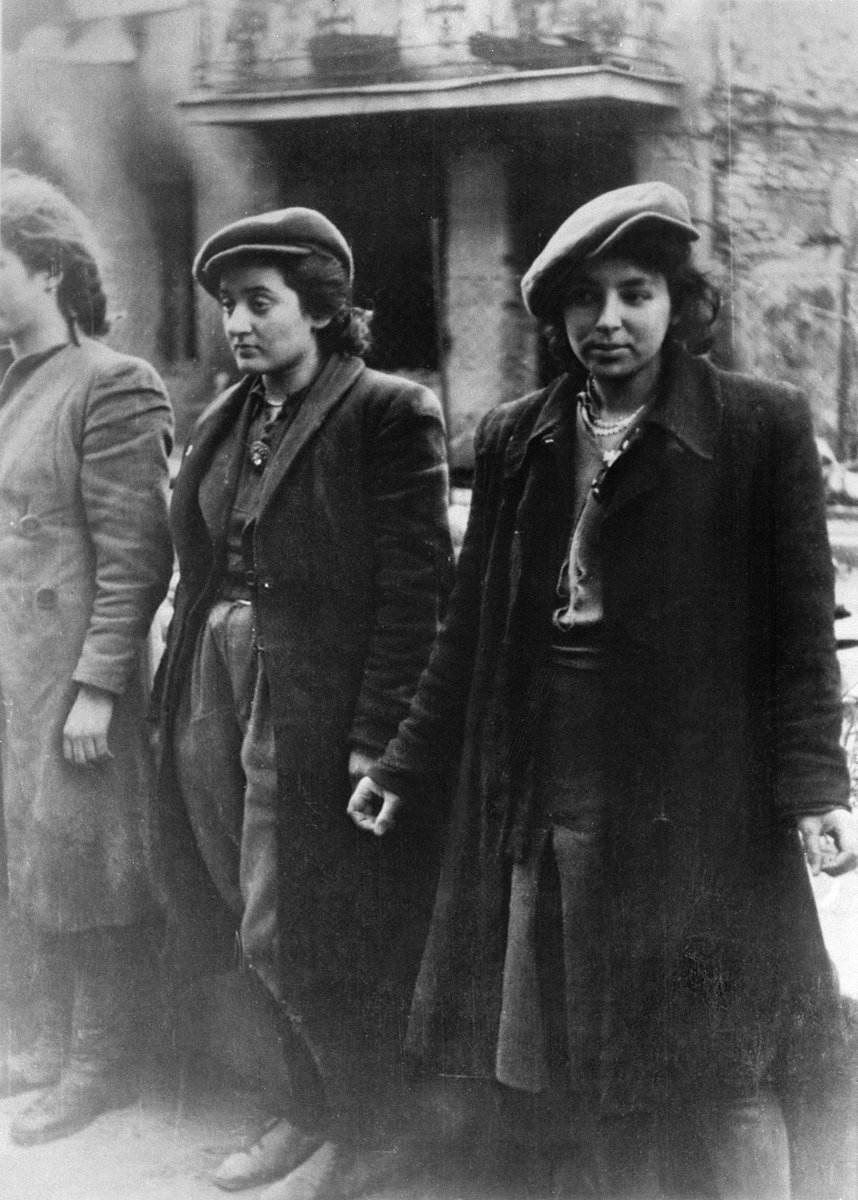Resistance
Warsaw Ghetto Uprising
Captured Jews led to deportation point by German Waffen SS (c. April-May 1943). Source: National Archives and Records Administration
On April 19, 1943 the SS and German police force returned with the intention of liquidating the entire Warsaw Ghetto and transporting the remaining population to forced labor camps in the Lublin district. The resistors undertook armed conflict against the Nazis to stop the deportation order and were able to inflict causalities on the well-armed SS and police forces.
Approximately 750 Jewish fighters continued to launch attacks against the SS and police units in the first days of the uprising. On April 21, SS General Jürgen Stroop commanded his forces to burn down the buildings and destroy the ghetto to force the Jews out. Over the next several days the ghetto was reduced to rubble but the Jewish resistance continued to fight. On May 8, raided the headquarters of the Jewish Combat Organization (ZOB) and killed ZOB leader Mordechai Anielewicz.
Captured Jewish ghetto fighters (c. April-May 1943). Source: National Archives and Records Administration
Underground bunker in Warsaw (c. 1943). Source: National Archives and Records Administration
On May 16, the uprising was finally halted by the Nazi SS and German police forces. An estimated 7,000 Jews died and another 7,000 were captured during the conflict. The captured Jews were taken to Treblinka where they were murdered. Around 42,000 Jews were sent to forced labor camps at Poniatowa and Trawniki and the Majdanek concentration camp, but many of them would be murdered in November 1943 during Erntesfest (Operation Harvest Festival). Months after the liquidation of the Warsaw Ghetto, Jews continued to hide in the ruins of the burnt out ghetto and others lived in hiding outside the ghetto walls in the “Aryan” section of Warsaw.
Destruction of the Warsaw Ghetto (c. May 16, 1943). Source: National Archives and Records Administration
The Warsaw Ghetto Uprising was the largest act of Jewish resistance against the Nazis during the Holocaust. The resistance fighters did not believe they could win against the SS and police units, but they refused to go quietly to death. Other uprisings took place in ghettos and concentration camps in German-occupied Europe and demonstrated the strength of the Jewish spirit in the face of death and devastation.
April 19, 2023 marks 80 years since the Warsaw Ghetto Uprising and the legacy of bravery and strength displayed the Jewish resistance fighters and civilians continues to inspire the fight for human rights and social justice in communities around the world. Memorials and commemorations have highlighted the individuals and organizations that led the resistance movements in ghettos and concentration camps while Holocaust Remembrance Days are often linked to the dates of the uprising.
Monument to the heroes of the Warsaw Ghetto Uprising. Source: WikiCommons





